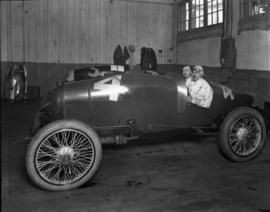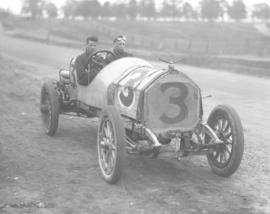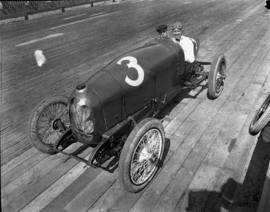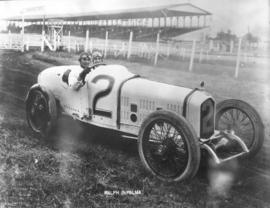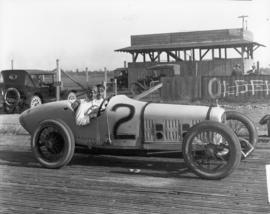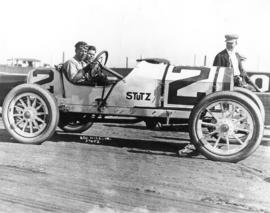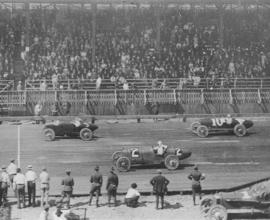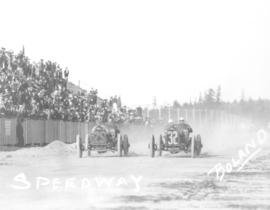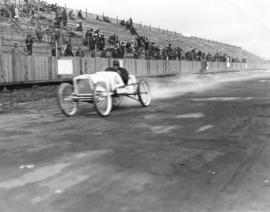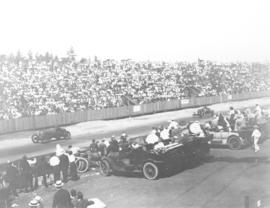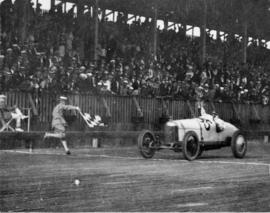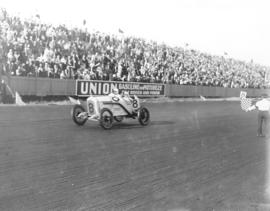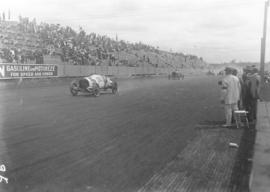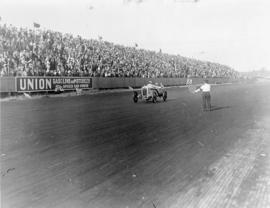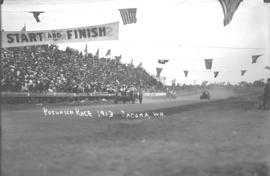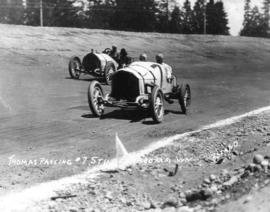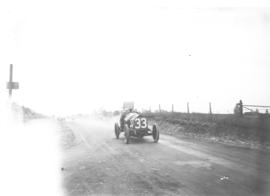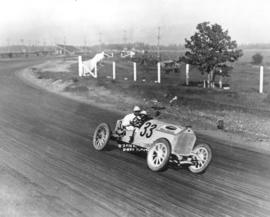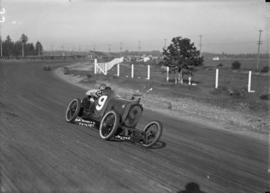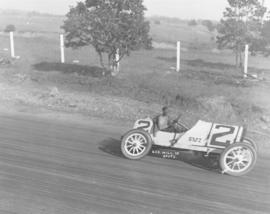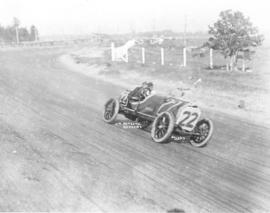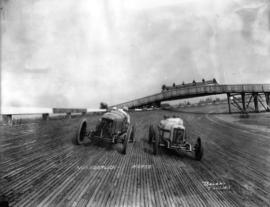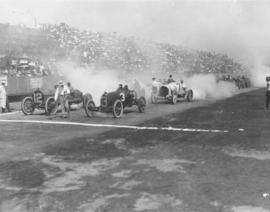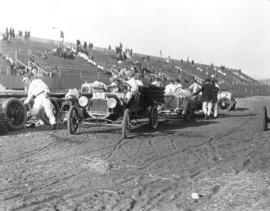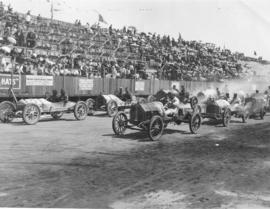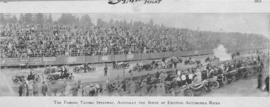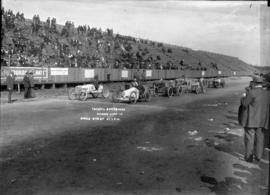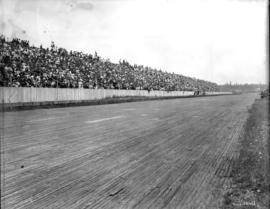- Item
- 1920-07
Part of Marvin Boland Photographs
Indy 500 winner Gaston Chevrolet is seated in the #4 Monroe, a car designed by his brother Louis, as he prepares for the 1920 Tacoma Class 225-mile run at the Tacoma Speedway. His dirt-stained uniform indicates that he has already put in a few practice runs on the two-mile board track. The man seated beside him is believed to be his "mechanician" John Bresnahan. The No. 5 vehicle next to the men, also a Monroe, will be driven by Roscoe Sarles at the July 5th race. Both cars, plus Ralph DePalma's Ballot (not shown) were garaged at Mueller-Harkins in downtown Tacoma. Last year's big winner at the Tacoma Speedway, Louis Chevrolet, journeyed to Tacoma to assist his brother in getting the car ready for the big race. The third member of the Monroe team was Ralph Mulford, who would drive #3, and come in second in a hard fought battle with winner Tommy Milton and his Duesenberg. Mr. Chevrolet's Monroe came in seventh with prize winnings of $1000. He had been forced to the pits to replace a broken water pump. He was able to continue but his engine couldn't keep up the pace set by Tommy Milton. (TNT 7-3-20, p. 15-article; TDL 7-6-20, p. 1+-results; TNT 7-6-20, p. 14-results)
Chevrolet, Gaston; Monroe automobile; Automobile racing--Lakewood--1920-1930; Racing automobiles--1920-1930;
